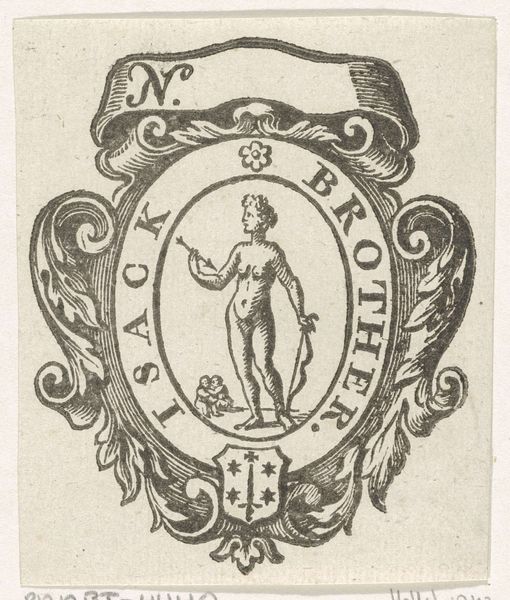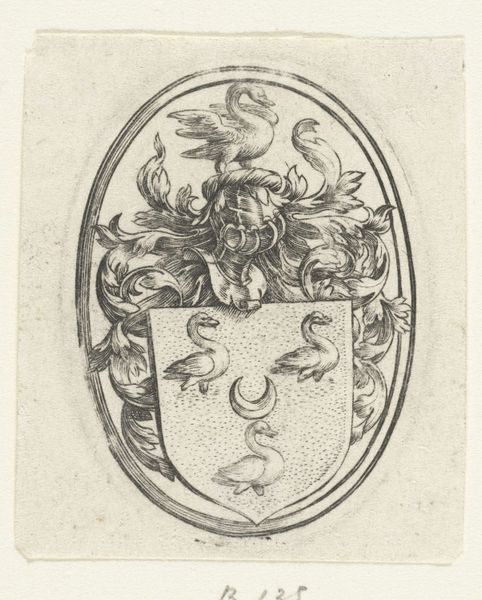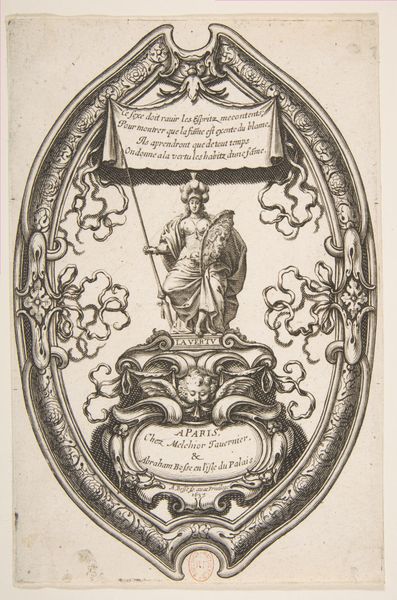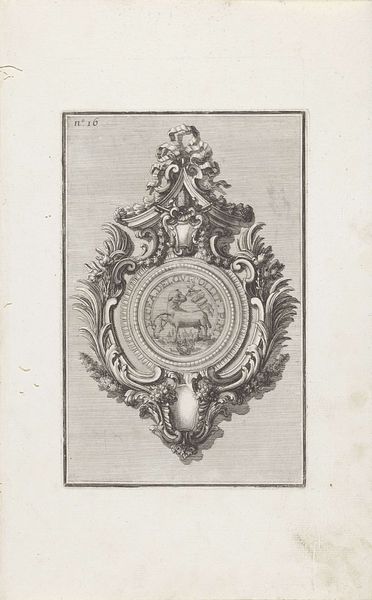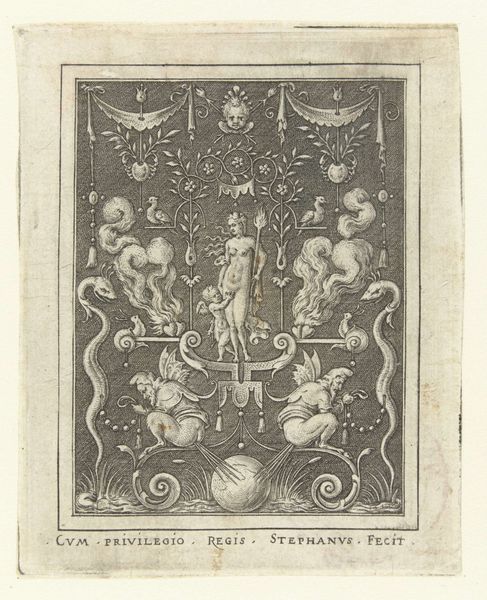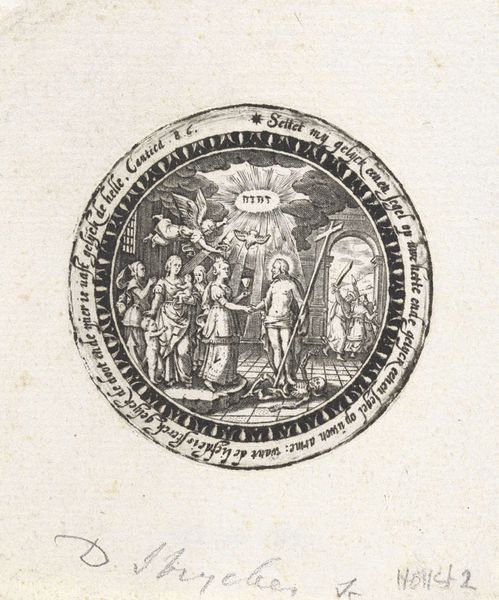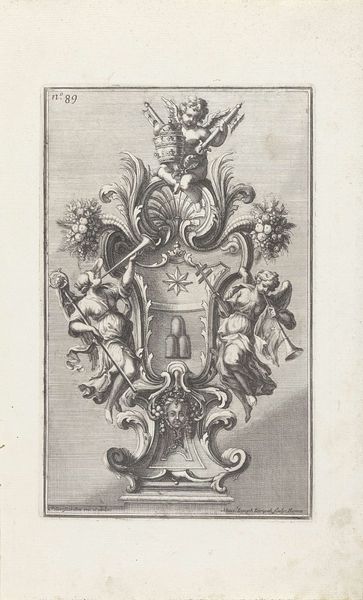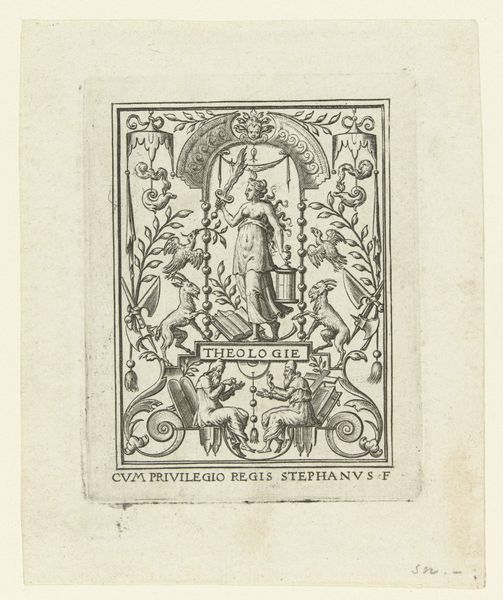
Rebus met verschillende voorwerpen die samen de woorden CI-GIT LA VENDETTA SURANNEE vormen 1862
0:00
0:00
graphic-art, print, engraving
#
graphic-art
#
narrative-art
# print
#
figuration
#
engraving
Dimensions: height 75 mm, width 80 mm
Copyright: Rijks Museum: Open Domain
Curator: Looking at Charles Meryon's "Rebus met verschillende voorwerpen die samen de woorden CI-GIT LA VENDETTA SURANNEE vormen" from 1862, one immediately notices the meticulous detail of the engraving. Editor: My first impression is a bit ominous; the monochrome palette combined with the imagery creates a somber mood, doesn't it? The density of lines and the circular structure are captivating but feel… enclosed. Curator: It does. And Meryon was known for his fascination with the darker sides of Parisian life. The rebus itself is quite telling, piecing together images to spell out "Here lies the outdated vendetta." Vendettas, often fueled by patriarchal power structures, traditionally victimized women. Seeing the woman as part of the puzzle makes you consider whose interests such obsolete struggles serve. Editor: The tools of manual labor here can’t be ignored; even the lettering of 'rebus' at the bottom calls attention to material reality of textual reproduction. Curator: Absolutely. How the narrative is constructed by merging words with material culture speaks volumes. Editor: To me, it points to how social realities are produced and maintained through various means – manual skills or cultural traditions. Curator: The medium, engraving, a typically meticulous and time-consuming process adds depth to this understanding. The physical act mirrors a sort of laborious effort required in dissecting complex societal conflicts. Editor: Yes, and to make a print is to democratize an image for wide dissemination—engraving as a means to reach the public eye. Curator: Consider then, to whom such statements would resonate. Editor: Someone embroiled, or who witnessed such strife would surely interpret this most potently, maybe finding solace reflecting how struggles evolve or become futile. The symbolic weight layered here transforms a "simple" print into a narrative that resonates through multiple lenses – technique, message, and historical understanding. Curator: Agreed; its accessibility combined with thematic gravitas serves both critique and invites introspection, underscoring how identity, specifically gender roles, informs societal narratives that resonate across different epochs. Editor: Indeed. I’m drawn now to how Meryon’s selection of materials, combined with his commentary on conflict offers us ways to examine the material and social forces that mold our own narratives, no?
Comments
No comments
Be the first to comment and join the conversation on the ultimate creative platform.
